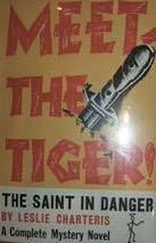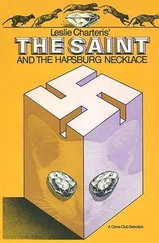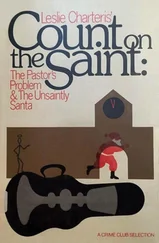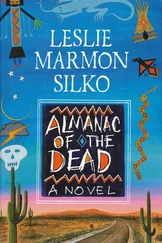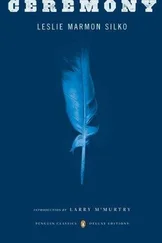Grandma Lillie grew up at Los Lunas where they spoke both English and Spanish in the house. Why didn’t she learn to talk Indian after she married Grandpa Hank? Was it because her family in Los Lunas was uneasy about her marriage outside the Church to a Laguna Pueblo man? For Grandma Lillie to learn to speak Laguna would have caused a stir among the wealthier Los Lunas relatives who fancied themselves too good to associate with Indians. After all, our Los Lunas relations had been merchants of everything at one time, including Indian slaves.
Grandma Lillie spoke Spanish to her mother, Great Grandma Helen, and to her Los Lunas relations, but she did not teach Spanish to my father or his brothers, just as Grandpa Hank did not teach my father and his brothers to speak Laguna.
Over the years, whenever I tried to learn a language, all the ghosts of the past reappeared — the anxiety and sense of guilt and inadequacy and the loss. Whenever I try to speak, I go into a slow panic and my hearing becomes scrambled by anxiety. Years ago when I taught at Diné College I tried to learn a few Diné greetings and phrases but I couldn’t do it. How could I learn Diné when I never learned Laguna?
Inever felt alone or afraid up there in the hills. The hummah-hah stories described the conversations coyotes, crows and buzzards used to have with human beings. I was fascinated with the notion that long ago humans and animals used to freely converse. As I got older, I realized the clouds and winds and rivers also have their ways of communication; I became interested in what these entities had to say. My imagination became engaged in discovering what can be known without words.
Stories themselves have spirit and being, and they have a way of communicating on different levels. The story itself communicates with us regardless of what language it is told in. Of course stories are always funnier and more vivid when they are told in their original language by a good storyteller. But what I love about stories is they can survive and continue in some form or other resembling themselves regardless of how good or how bad the storyteller is, no matter what language they are told or written in. This is because the human brain favors stories or the narrative form as a primary means of organizing and relating human experience. Stories contain large amounts of valuable information even when the storyteller forgets or invents new details.
So I found myself left with English and some Spanish but only a meager number of words in the language of Ka’waik, the Beautiful Lake place. When I started to write short stories in creative writing class at the beginning of my second year at the University of New Mexico the challenge for me was to make English express or evoke the experiences of hearing the stories told when I was a child.
My sense of narrative structure, of how a story needs to be told, all this came to me from the stories Aunt Alice, Aunt Susie and Grandpa Hank told me. They carefully chose the English words that best evoked the stories as they heard them told in the Laguna language when they were children, before they learned English.
Linguistic diversity is integral to the cultural diversity that ensures some humans will survive in the event of one of the periodic global catastrophes. Local indigenous languages hold the keys to survival because they contain the nouns, the names of the plants, insects, birds and mammals important locally to human survival.
As important as the nouns are the verbs that denote the actions, the activities, the states of being or consciousness that are important to human survival locally. Indigenous languages contain this knowledge; the survival information is encoded in the grammar of the language.
A language determines whether or not you pay attention to an experience or object; if you have a term or syntactical construction that denotes a relationship or an experience, then you look out for it and are able to see it or hear it. My old friend, the artist Aaron Yava who left us some years ago, made a wonderful line drawing of an old man who walked in a distinctive manner, in which the muscles of his back seemed to work themselves independently as he walked along. Aaron wrote this was “chickish muggee”—someone who exercises his back as he walks along. I never forgot that term, and years later I did see a man walking like that, “chickish muggee,” his back was moving this way and that way as he went along.
In a lecture I gave in 2008 at West Virginia University I happened to mention that five hundred years from now, throughout the Americas, Nahuatl and related Uto-Aztecan languages will be spoken, not Spanish or English or even Chinese. Later, CC at West Virginia U sent me an e-mail with this newspaper article: “The mayor of Mexico City, Marcelo Ebrard, wants all city employees to learn to speak the Aztec language, Nahuatl. A possible presidential candidate in 2012, Ebrard presented his government’s development plan this week translated for the first time into Nahuatl. He calls it a first step toward establishing the use of Nahuatl in the government. Translators who speak Nahuatl already work in hospitals and courtrooms, but now desk workers will learn the basics of Nahuatl from classroom sessions and online courses.”
I realize now that from the time I was very small, I focused my attention more on non-verbal communication between people, between animals and between other beings. I used to trail along behind my great grandmother without a word, absorbing from her all the waves of experience and being in shared proximity. I helped her pick “graahdunt,” cilantro, from her garden; I helped her carry the coal bucket and I pulled the hose along while she watered the cosmos and hollyhocks. She and the others of her generation happily existed without concern for clocks, were never in a hurry, never impatient with anyone. There was always time for everything as long as the sun was up.
I learned the world of the clock and calendar when I started school, but I’ve never lost my sense of being alive without reference to clocks or calendars. My great grandmother didn’t know exactly when she was born; none of her generation did. Calendar age wasn’t important. Time was very much present time; even the way the old folks talked about the ancestors and their time was located in the present. Those who passed on to join our beloved ancestors at Cliff House remained close by; Cliff House wasn’t far away.
I learned adults would tolerate my presence if I kept quiet and didn’t touch things. I used to go looking for adults at work in their yards, chopping wood or hanging wet laundry on the clothesline. I watched Aunt Alice rake up trash and weeds down at the dump (so they didn’t blow into her yard, she said). She had a mania for order and for saving things. Her yard was spotless, swept clean every day with a broom. Her house was in complete order, so she cleaned the dump.
Aunt Alice saved every penny, so she wasn’t poor. She had a pension from years as a Government nurse. My mother was the postmaster at Laguna when the U.S. Treasury Department sent a postal inspector to find out what happened to all the checks they’d sent Alice Marmon Little; none of her pension checks had been cashed. The postal inspector discovered Aunt Alice had a big stack of turquoise blue U.S. Treasury checks she was saving. The inspector explained she should cash the checks and then save the money.
Aunt Alice searched the dump for things that still had some good or some use left in them. Right away I sensed the excitement of a sort of treasure hunt. I remember her finding a broken kettle with a hole in the bottom, and a frying pan with a broken handle, both of which she carried home and washed and saved. In the early twentieth century, in rural New Mexico, the people saved glass containers and tin cans; they straightened nails and hinges for reuse, and they kept piles of remnant 2×4s and pieces of galvanized steel roofing. At Laguna the people were accustomed to reusing stones from fallen down walls or buildings.
Читать дальше

